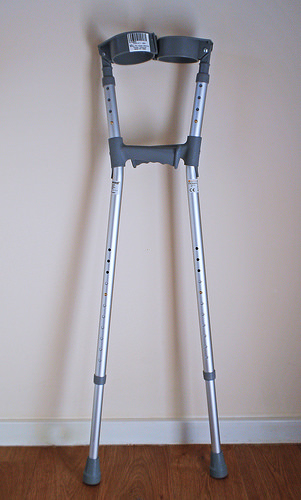As we approach the winter holidays, retailers everywhere are planning their biggest cycles of annual sales. One doesn’t have to be a grinch to notice that these events can introduce additional hazards for retail employees – and for others who may be shopping. It’s therefore a good time to review guidance for managing these hazards, which was promulgated by the Occupational Safety and Health Administration (OSHA) in 2012. This guidance followed a national review after a highly-publicized incident during which a worker at a Long Island Walmart was trampled to death by a crowd mobbing the store’s Black Friday (day after Thanksgiving) sales event in 2008. OSHA determined that Walmart should have anticipated crowd-related hazards, and fined the company for a violation of the Employer’s General Duty Clause (I wrote about this here)
Read MoreAudit, Compliance and Risk Blog
Tags: Business & Legal, Employer Best Practices, Health & Safety, OSHA, Employee Rights, EHS, Workplace violence
Reversed on Appeal: Workplace Harassment Isn’t a Tort In Ontario After All
Posted by Jon Elliott on Tue, Sep 03, 2019
Although an ever-expanding range of laws prohibit workplace harassment, the Court of Appeal for Ontario has now ruled that harassment is not a free-standing common law tort in that province. This ruling reverses a trial court ruling by the by the provincial Superior Court of Justice that shocked employment law in 2017. This ruling returns workplace harassment to the realm of statutory and regulatory requirements and prohibitions, which certainly isn’t unambiguous, but at least offers more structured frames of reference. The case is Merrifield v. Canada (Attorney General), and it litigates a complaint between a member of the Royal Canadian Mounted Police (RCMP) and his employers.
Read MoreTags: Business & Legal, Employer Best Practices, Employee Rights, Workplace violence, Canadian
Canada—Federal Employers: Prepare for a Wave of Change in Workplace Harassment Obligations
Posted by Maryse Tremblay on Tue, Jul 30, 2019
In the last few years, and particularly with the advent of the #MeToo movement, some employers may have seen a rise in the number of harassment complaints in the workplace, including sexual harassment complaints. Employers under federal jurisdiction have been affected as well.
However, the current legal framework surrounding harassment and violence in federally regulated workplaces is fragmented. The results of many public consultations have shown that this framework is not currently designed to adequately address occurrences of sexual harassment and sexual violence.
In that context, in the past 18 months, significant changes have been proposed to the current legislation to address workplace harassment situations.
Tags: Business & Legal, Employer Best Practices, Health & Safety, Employee Rights, Workplace violence, Canadian
Occupational Safety and Health Review Commission Confirms Employer’s General Duty Clause Applies to Workplace Violence
Posted by Jon Elliott on Tue, May 14, 2019
On March 4, 2019, the U.S. Occupational Safety and Health Review Commission (Commission) issued its first affirmation of a citation and penalty issued by the Occupational Safety and Health Administration (OSHA) to punish a health care provider under the Employer’s General Duty Clause for failing to take adequate steps to prevent workplace violence. OSHA has issued citations under this Clause since 2012, but this is the first time that the Commission has confirmed one of these citations on appeal.
Read MoreTags: Business & Legal, Employer Best Practices, Health & Safety, OSHA, Employee Rights, Workplace violence
But there are many other potential risks that could result in lawsuits against corporate directors and officers (D&O). These include an ensuing drop in stock price after an incident, mishandling of personal information, effects of the opioid crisis, sexual harassment allegations, and pollution risk created by the use and disposal of dangerous chemicals used in manufacturing. Even liability suits for mass shootings in the workplace can find their way to directors and officers.
Insurance designed to protect corporate directors and officers has been on the market for almost a century, but it was not until the scandals of Enron and WorldCom in the early 2000s that many executives became more aware of the need for liability protection. While we all remember those two bankruptcies, many may not recall that directors of WorldCom had to contribute their personal assets to settle the D&O claims that ensued.
Today, the risk factors motivating the purchase of additional D&O insurance are compelling, but the type of coverage purchased has a material impact on the limits available to protect directors from liability. As corporate officers reevaluate their current D&O coverage, it is important to thoroughly understand the type of coverage purchased and to quantify a board’s potential risk or “claim severity.”
Understanding and Quantifying D&O Risk
In 2017, 9% of public companies in the United States faced securities class actions—an all-time high. These are highly correlated with ensuing D&O claims, and the risks facing every company continue to grow. A U.S. Supreme Court ruling late last year, for example, now enables litigants to pursue class action suits regarding initial public offerings in state courts, which are commonly perceived to be more sympathetic to plaintiffs. These suits are also generally more expensive to defend because they cannot be consolidated and must be negotiated or litigated case by case.Despite this increase in risk and liability exposure, the market for D&O insurance continues to be soft, with low premiums relative to the potential exposure. There continues to be ample competition for this business, preventing any meaningful increase in pricing. As such, this is a good time for companies to purchase additional coverage as pricing may be at a low point, especially in the excess layers. That said, not all D&O coverages are alike. An understanding of the coverages and their differences is essential for decision-makers looking to evaluate risk mitigation options.
Differences In D&O Coverage
With the introduction of the Private Securities Litigation Reform Act (PSLRA) in 1995, there followed a change in D&O coverage available in the marketplace. PSLRA is a federal law enacted in response to the perceived increase in frivolous class action suits alleging securities fraud under the Securities Act of 1933 and the Securities Exchange Act of 1934. The key features of PSLRA are:
Read MoreTags: Business & Legal, Workplace violence, corporate social responsibility, directors, directors & officers
Is Your Workplace Injury and Illness Log Ready for Compliance with OSHA Requirements?
Posted by Jon Elliott on Thu, Jan 31, 2019
The Occupational Safety and Health Administration (OSHA) requires employers to prepare and maintain records of occupational injuries and illnesses (I&I Logs) as they occur. OSHA also requires employers to post an annual I&I Summary in each “establishment” within their workplace by February 1, summarizing that workplace’s I&Is during the previous calendar year. In states that administer federal standards within state-run programs, employers follow the comparable state requirements. Establishments with 250 or more workers must file electronic summaries by March 2.
Read MoreTags: Business & Legal, Health & Safety, OSHA, Workplace violence
Directors' Liability for Workplace Sexual Harassment in Canada Can Depend on Which Laws are Applied
Posted by Jon Elliott on Tue, Jan 22, 2019
Tags: Business & Legal, Employer Best Practices, Employee Rights, Workplace violence, Canadian, directors, directors & officers
-
In isolated areas of the employer’s workplace - such as a security guard making rounds at a site, or a miner in an isolated area.
-
At times when no co-workers are around - such as a late-working professional; a night janitor, nurse or security guard making rounds; or a hotel room service worker.
-
As the sole employee at a facility - such as late-night retail gas station or convenience stores.
-
Away from the home office, separated from co-workers and exposed to customers or others - law enforcement or security personnel on patrol, home-care health and social workers, taxi drivers, and traveling sales personnel.
Although isolation makes it inherently harder to protect these workers from harm and to respond to any incidents, employers still must provide them with reasonable levels of protection from workplace hazards. The following discussion synthesizes guidance from national agencies, and specific requirements adopted by a few jurisdictions to protect employees working alone or in isolation.
- Who is “working alone?”
Definitions of “working alone” vary, but each incorporates some or all of the following circumstances:
• Worker is the only worker for that employer at that workplace, during any time period.
• Worker is not directly supervised, during at least part of work shift.
• Assistance is not readily available if there is an emergency.
• Conditions render this isolation potentially hazardous.
- What employer actions can help?
Specific requirements that employers provide for isolated employees’ safety vary. For example, Manitoba requires the employer to:
-
Identify risks arising from the conditions and circumstances.
-
“So far as is reasonably practicable,” take steps to eliminate or reduce the identified risks.
-
Develop and implement safe work procedures to eliminate or reduce the identified risks.
-
Train workers in these safe work procedures.
- Ensure that workers comply with these safe work procedures.
- What are specific examples of workplace safety measures?
Workplace responses depend on circumstances. For example, if the isolated employee works in a single location, the location and workshift can be designed to reduce hazards. For example, New Mexico requires at least one of the following security measures be implemented in all convenience stores operating between 11 p.m. and 5 a.m.:
-
Two-employee shift - two employees, or one employee plus onsite security personnel.
-
Controlled access area - this area must be behind bullet-proof glass or other similar material.
-
Pass-through window - transactions must be protected by bullet-proof glass or other similar material.
-
Alternative operations - the store may be closed for business, but employees allowed access for restocking or other duties, if signs are posted on all entryways saying the store is closed.
In other situations where the employee travels, for example to conduct a service or security sweep, there’s no single space to isolate but enhanced communication can reduce hazards. For example, Chicago’s new ordinance (dubbed the “pants on, hands off” requirement) requires hotels to do the following:
-
Develop, maintain and comply with a written anti-sexual harassment policy to protect employees against sexual assault and sexual harassment by guests, including instructions to leave threatening situations if possible, reporting procedures, onsite incident follow-up (immediate, and subsequently with law enforcement if applicable), and training regarding these procedures and employee rights (effective January 7, 2018).
-
Provide all employees with a current copy (in English, Spanish and Polish) of the hotel's anti-sexual harassment policy, and post copies in conspicuous places in areas of the hotel, such as supply rooms or employee lunch rooms (effective January 7, 2018).
-
Equip employees who are assigned to work in isolation in a guest room or restroom with a panic button or notification device (effective July 1, 2018)
Self-Assessment Checklist
Has the organization assessed work assignments and its facilities, to identify workers who may work alone or in isolation?
-
Are these assignments routine and ongoing, or infrequent?
-
Does the location contain inherent hazards (stairs, operating equipment, etc.) where mishaps or malfunctions can cause hazards?
- Are the employees isolated from outside interventions (e.g., in a secured facility) or subject to interaction with outsiders (customers, clients, etc.)?
Has the organization identified specified hazards and their causes, and evaluated risk reduction measures?
-
Monitoring systems?
-
Staffing?
-
First aid and emergency procedures?
- Workplace violence?
Has the organization developed risk reduction policies, plans and procedures?
Does the organization provide training and equipment to affected employees?
Where Can I Go For More Information?
Specialty Technical Publishers (STP) provides a variety of single-law and multi-law services, intended to facilitate clients’ understanding of and compliance with requirements. These include:
About the Author
Jon Elliott is President of Touchstone Environmental and has been a major contributor to STP’s product range for over 25 years. He was involved in developing 13 existing products, including Environmental Compliance: A Simplified National Guide and The Complete Guide to Environmental Law.
Mr. Elliott has a diverse educational background. In addition to his Juris Doctor (University of California, Boalt Hall School of Law, 1981), he holds a Master of Public Policy (Goldman School of Public Policy [GSPP], UC Berkeley, 1980), and a Bachelor of Science in Mechanical Engineering (Princeton University, 1977).
Mr. Elliott is active in professional and community organizations. In addition, he is a past chairman of the Board of Directors of the GSPP Alumni Association, and past member of the Executive Committee of the State Bar of California's Environmental Law Section (including past chair of its Legislative Committee).
You may contact Mr. Elliott directly at: tei@ix.netcom.com
photo credit: spanaut winning via photopin (license)
Read MoreTags: Employer Best Practices, Employee Rights, Workplace violence
Does Sex Discrimination Include Sexual Orientation – The Second Circuit Changes Sides
Posted by Jon Elliott on Tue, Apr 24, 2018
Because federal anti-discrimination statutes include “sex” discrimination but do not define the term, its interpretation evolves with social and political changes, with policy changes by the Equal Employment Opportunity Commission (EEOC), which administers and enforces Title VII of the Civil Rights Act of 1964 and a variety of subsequent laws, and with court decisions. A major present debate is whether “sex” encompasses “sexual orientation” – which would protect non-heterosexual employees against employment action based on their sexual orientation. On February 26, 2018 the Second Circuit Court of Appeals reversed its own precedent, and decided that homosexual employees are protected.
Read MoreTags: Employer Best Practices, Employee Rights, Workplace violence, EEOC, directors, directors & officers
Highly-publicized revelations about extensive workplace harassment have cost many alleged harassers their high-powered positions (including US Senator Al Franken), and are producing a variety of proposals to toughen standards. One of the first new provisions was enacted by the U.S. Senate on November 9. The Senate Anti-Harassment Training Resolution of 2017 (S.Res. 330) will require anti-harassment training in Senate offices. The Resolution applies to internal governance of the Senate, so does not apply to any other body, such as the House of Representatives (where House Resolution 630, requiring annual training by each member, officer and employee in employee rights, including anti-harassment and anti-discrimination, was passed on November 29 but is being reconsidered).
Read MoreTags: Business & Legal, Employer Best Practices, Employee Rights, Workplace violence










